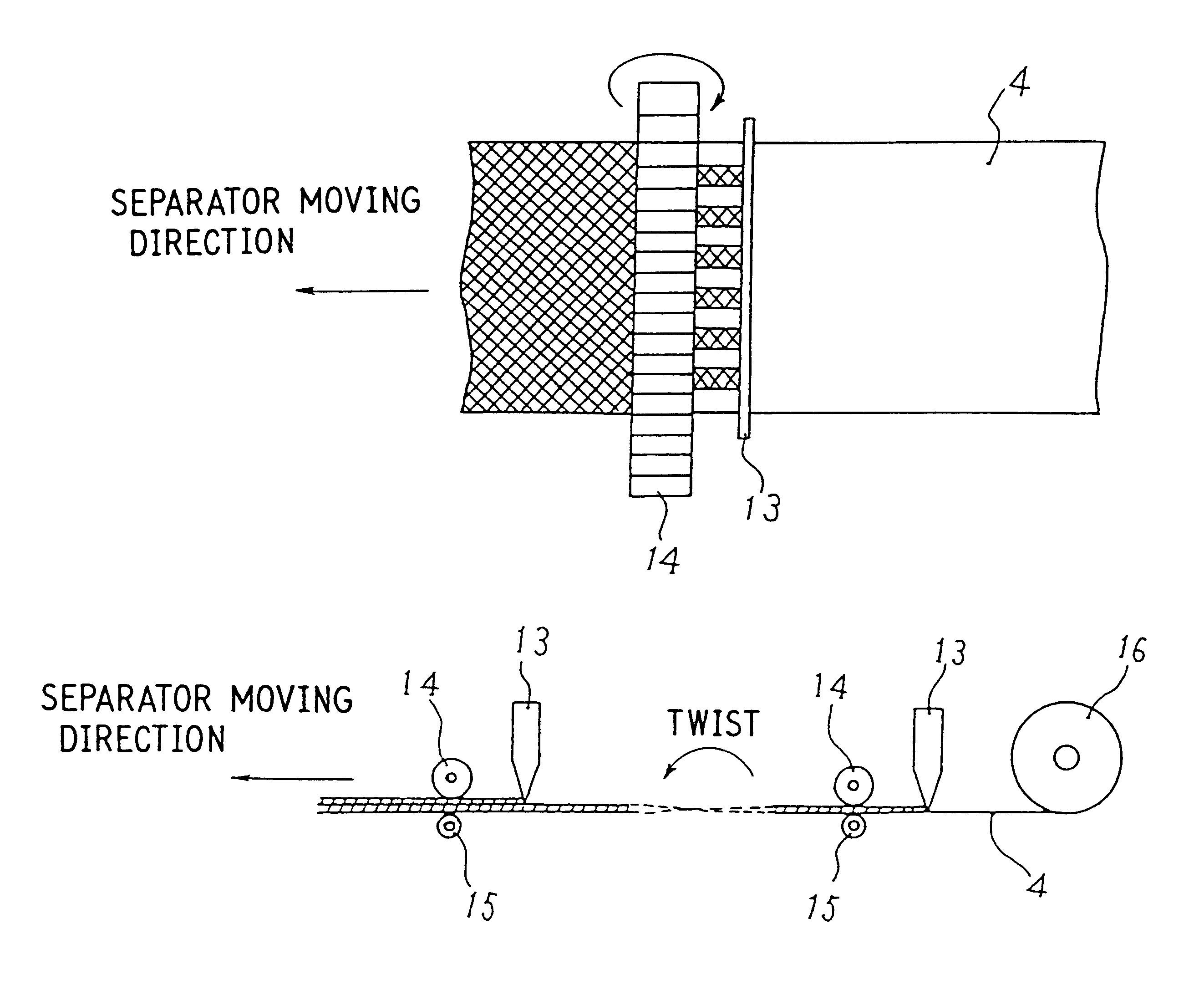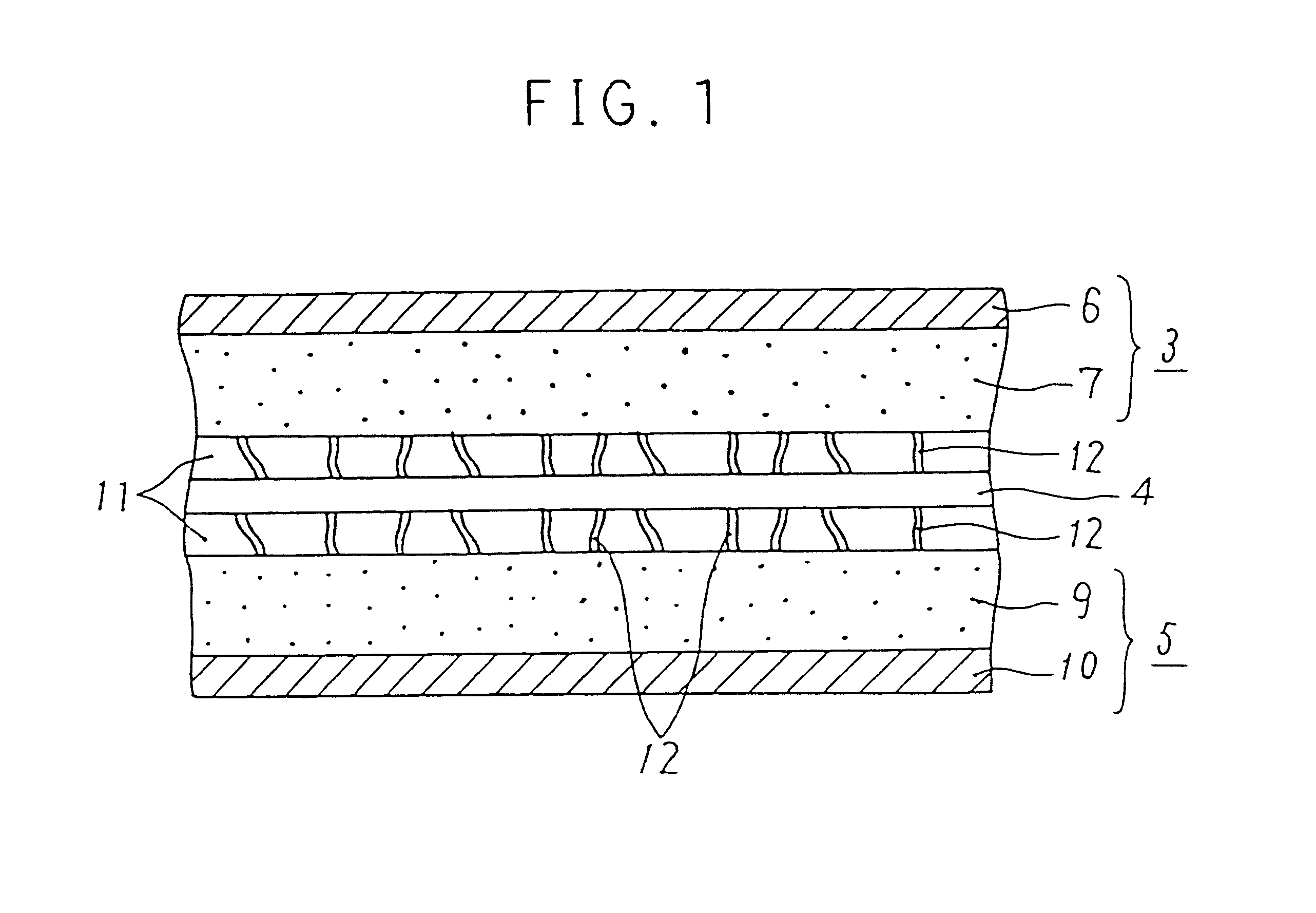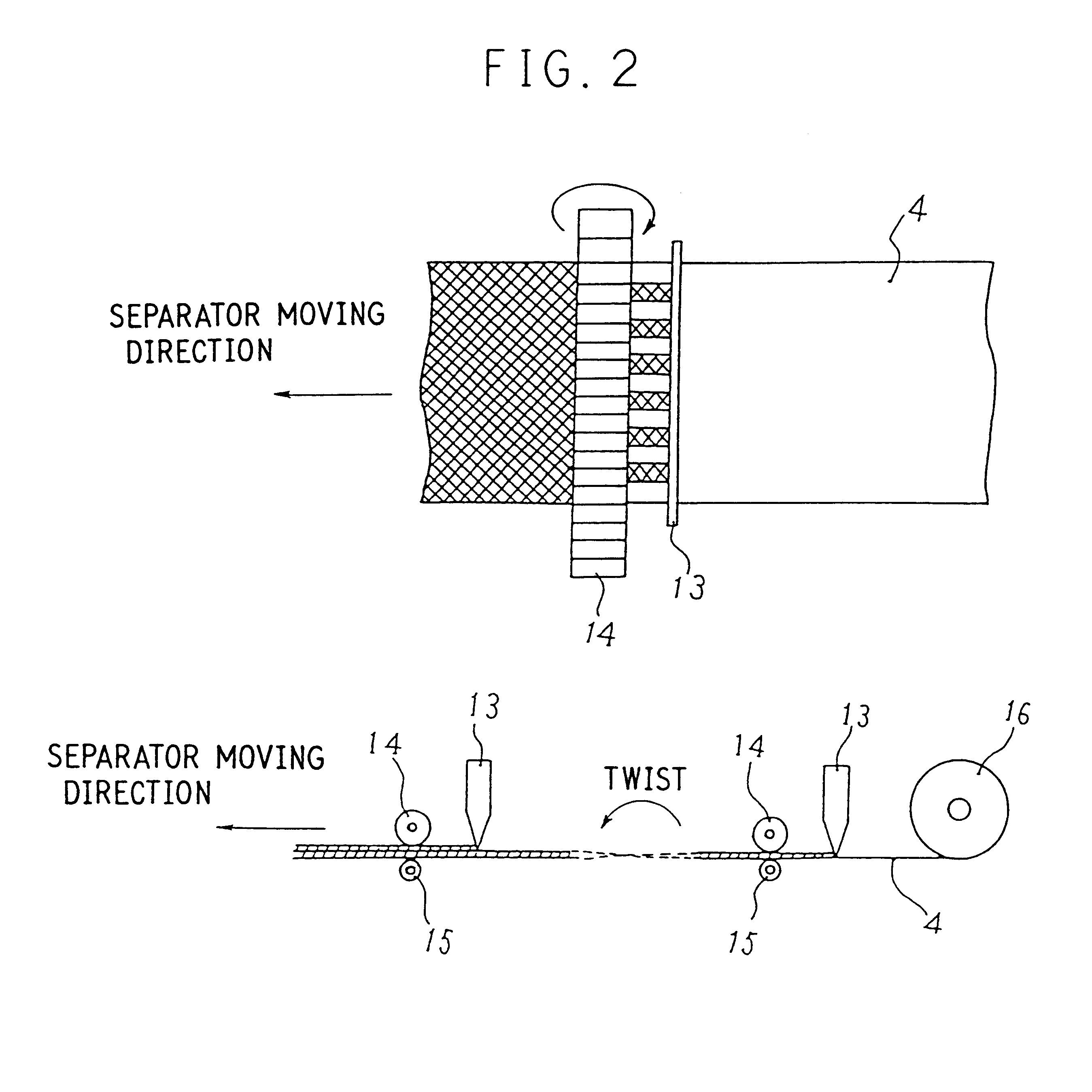Method for manufacturing lithium ion secondary battery
- Summary
- Abstract
- Description
- Claims
- Application Information
AI Technical Summary
Benefits of technology
Problems solved by technology
Method used
Image
Examples
example 2
Table 1 shows the peeling strength between the negative electrode and the separator, when the humidity and leaving time of the application in Example 1 were changed in a range of 20% through 90%, and in a range of 15 seconds, 1 minute and 5 minutes, respectively.
It was found out from Table 1 that the adjustment of humidity was effective to control of the peeling strength.
example 3
It was possible to join the electrodes with the separator with the same bonding strength of at least 20 gf / cm as in Example 1, even if the adhesive resin solution was applied onto the separator under the conditions of a temperature of 25.degree. C. and the humidity of 30% in the same manner as in Example 1, then the separator applied with the resin solution was exposed in water vapor for at least one second. As a result, it became possible to obtain a compact and light-in-weight secondary battery having excellent charge-discharge characteristics demanding no strong solid casing.
example 4
It was possible to join the electrodes with the separator with the same bonding strength of at least 20 gf / cm as in Example 1, even if the adhesive resin solution was applied onto the separator under the conditions of a temperature of 25.degree. C. and a humidity of 30% in the same manner as in Example 1, then the separator applied with the resin solution was exposed in ethanol vapor for at least one second. As a result, it became possible to obtain a compact and light-in-weight secondary battery having excellent charge-discharge characteristics demanding no strong solid casing,
PUM
| Property | Measurement | Unit |
|---|---|---|
| Solubility (mass) | aaaaa | aaaaa |
| Adhesivity | aaaaa | aaaaa |
| Strength | aaaaa | aaaaa |
Abstract
Description
Claims
Application Information
 Login to View More
Login to View More - R&D
- Intellectual Property
- Life Sciences
- Materials
- Tech Scout
- Unparalleled Data Quality
- Higher Quality Content
- 60% Fewer Hallucinations
Browse by: Latest US Patents, China's latest patents, Technical Efficacy Thesaurus, Application Domain, Technology Topic, Popular Technical Reports.
© 2025 PatSnap. All rights reserved.Legal|Privacy policy|Modern Slavery Act Transparency Statement|Sitemap|About US| Contact US: help@patsnap.com



